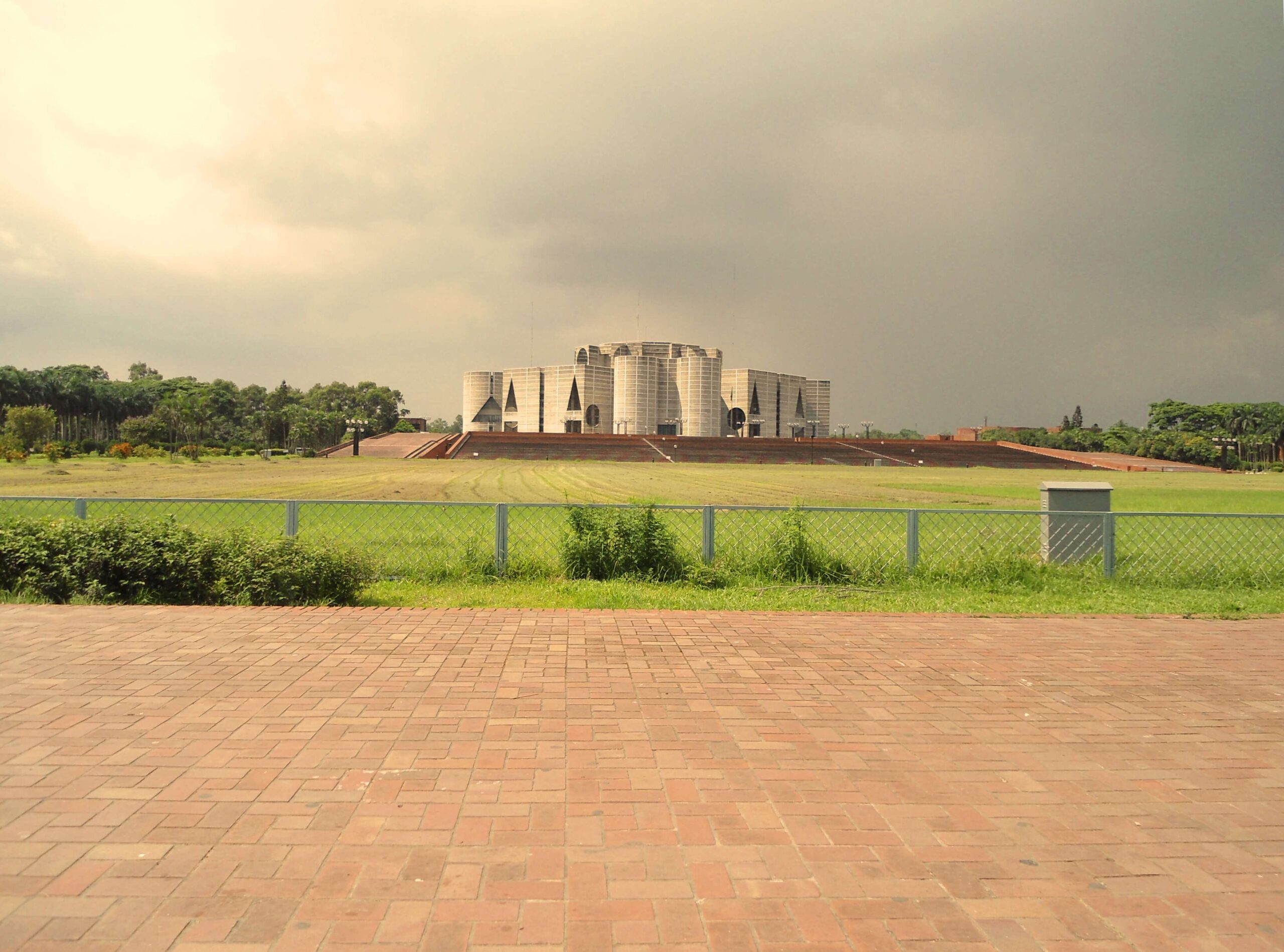Table of Contents
The Bangladesh National Parliament or Jatiya Sangsad Bhabanstands as an iconic testament to the ideals of democracy and architectural brilliance. Situated in Sher-e-Bangla Nagar, Dhaka, this structure is one of the most celebrated legislative buildings in the world, renowned for its groundbreaking design, historical significance, and cultural symbolism. Designed by the legendary American architect Louis I. Kahn, it represents a harmonious blend of modernist architecture and traditional Bangladeshi elements. This essay explores its history, architectural features, and cultural significance, showcasing why it remains a source of national pride.
Historical Background
Genesis of the Parliament
The origins of the Jatiya Sangsad Bhaban trace back to the early 1960s when Bangladesh was still East Pakistan. The idea to construct the building arose from the necessity to house the legislative assembly of East Pakistan. In 1962, the government commissioned Louis I. Kahn, a visionary architect, to design the structure. Kahn envisioned a parliament building that would be monumental and timeless, reflecting the aspirations of the people it served.
Construction Timeline
Construction began in 1961, but political upheavals, including the Bangladesh Liberation War of 1971, delayed its completion. After Bangladesh gained independence in 1971, the building’s purpose was redefined to house the legislature of the new sovereign nation. Work resumed, and the building was finally completed in 1982, a full two decades after its inception. Its completion marked a significant milestone, symbolizing the resilience and determination of the Bangladeshi people.
Architectural Brilliance

Design Philosophy
Louis Kahn’s design for the Jatiya Sangsad Bhaban embodies the principles of simplicity, functionality, and symbolism. He believed architecture should serve as an expression of the human spirit and designed the building to foster a sense of unity and transparency, integral to a democratic institution.
The structure is an interplay of geometric shapes, with circular, triangular, and rectangular forms dominating its façade. These forms are not merely aesthetic but functional, allowing for natural light and ventilation to permeate the interior.
Layout and Structure
The entire complex spans 200 acres, making it one of the largest legislative complexes globally. Key elements include:
- Main Parliament Building: The central structure houses the assembly chamber, offices, and other facilities. Its symmetrical design is striking, with a central octagonal core surrounded by eight peripheral blocks.
- Assembly Chamber: The heart of the building, the assembly chamber, can accommodate up to 354 members. Its ceiling, soaring 117 feet high, is topped by a spectacular geometric skylight.
- Artificial Lake: The parliament complex is encircled by an artificial lake, designed to resemble the natural rivers of Bangladesh. This feature enhances the aesthetic appeal and integrates the building with the surrounding landscape.
Material and Texture
The building primarily uses reinforced concrete, with white marble accents. The use of concrete reflects modernist architectural trends, while the marble detailing lends the structure an air of elegance. Kahn’s emphasis on light and shadow is evident in the building’s hollow spaces, which create dynamic visual effects as sunlight shifts throughout the day.
Symbolism and Cultural Significance

Reflection of Democracy
The Jatiya Sangsad Bhaban is more than a physical structure; it is a symbol of Bangladesh’s commitment to democracy and self-governance. Its open, geometric design reflects the ideals of equality and transparency that are central to parliamentary democracy. The building’s central location in Dhaka underscores its importance as the heart of national decision-making.
Blending Tradition with Modernity
Kahn’s design incorporates elements that resonate with Bangladesh’s cultural heritage. The vast open spaces and water bodies surrounding the complex echo the traditional rural landscapes of the country. The geometric motifs draw inspiration from Islamic art and architecture, connecting the modern structure to the region’s historical roots.
Tourism and National Identity
Today, the Jatiya Sangsad Bhaban is a major tourist attraction, drawing visitors from around the world. For Bangladeshis, it is a source of immense pride and a symbol of their nation’s journey toward independence and development.

Challenges and Preservation
Despite its grandeur, the Jatiya Sangsad Bhaban faces challenges in terms of maintenance and preservation. The vast scale of the building and its unique architectural features demand specialized care, which can be costly. Over the years, efforts have been made to preserve its original design and integrity, ensuring it continues to inspire future generations.
The Bangladesh National Parliament, or Jatiya Sangsad Bhaban, is not merely a legislative building but a profound statement of democracy, resilience, and architectural excellence. Designed by Louis I. Kahn, its timeless beauty lies in its ability to seamlessly blend modernist ideals with the cultural essence of Bangladesh. As a symbol of national pride, it reminds the world of the power of design to inspire, unite, and transcend time. For the people of Bangladesh, it is a beacon of hope and a testament to their enduring spirit.
Wiki say’s: The Jatiya Sangsad (Bengali: জাতীয় সংসদ, romanized: Jatiyô Sôngsôd, lit. ’National Parliament’), often simply referred to as Sangsad and also known as the House of the Nation, is the supreme legislative body of Bangladesh.

Leave a Reply